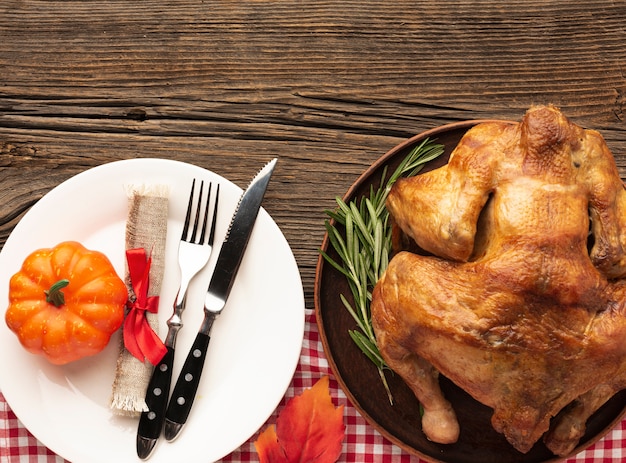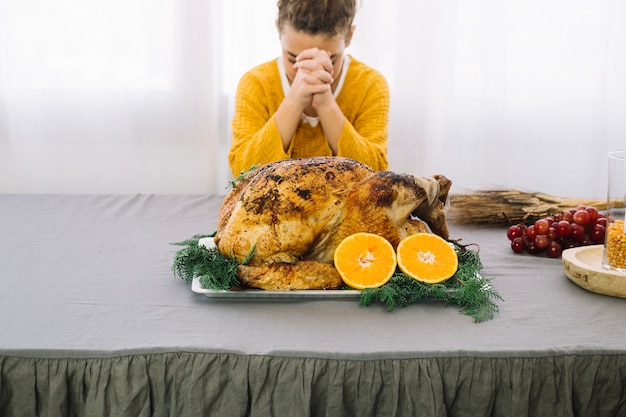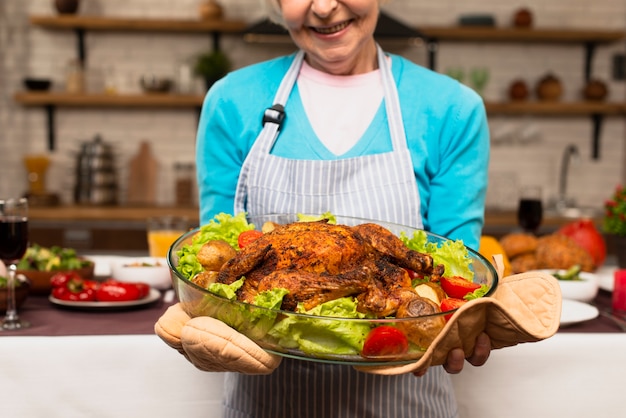Roasting a whole chicken is one of those culinary feats that feels both impressive and surprisingly doable. It's a dish that can grace any table, from a casual weeknight dinner to a celebratory feast. But let's be honest, nailing that golden-brown, succulent bird can be a bit tricky, especially if you're just starting out. I've certainly had my share of roast chicken mishaps – burnt skin, dry, stringy meat – the whole shebang. But through trial and error, and a whole lot of delicious experimentation, I've finally cracked the code.
So, grab your trusty oven mitts, fellow cooks, and join me on this culinary adventure. We'll delve into the secrets of roasting a whole chicken, from selecting the right bird to mastering the art of roasting time. You'll be surprised at how easy it is to create a show-stopping meal that'll have your family and friends singing your praises.
Part 1: Finding Your perfect chicken

The Art of Choosing a Chicken
Let's start with the star of the show: the chicken. Now, I'm not talking about some scrawny, supermarket special. We're aiming for a plump, well-fed bird that's going to deliver maximum flavour and juicy meat.
For a truly satisfying roast, I always opt for a free-range or organic chicken. These birds have a more active lifestyle, meaning they get more exercise and enjoy a varied, natural diet. It makes a world of difference in the flavour, believe me. You can really taste the difference!
Another crucial factor is the size of the chicken. For a family of four, a 1.5-2kg chicken is perfect. If you're feeding a larger crowd, you'll need to scale up accordingly. You can always ask your butcher for advice on the perfect size for your needs.
Don't Skip the Inspection
Once you've got your bird, give it a thorough inspection. Make sure the skin is smooth, the flesh is firm and springy, and there are no signs of spoilage. If you notice any strong odours, discolouration, or slimy texture, it's best to choose another bird.
Also, take a look at the packaging. If the packaging is overly damp, it might mean the chicken hasn't been stored properly and might not be fresh. A dry, well-packaged chicken is your best bet.
Prepping Your Chicken for Roast Glory
Now that you've chosen the perfect bird, let's prep it for its oven journey. First, remove the giblets from the cavity. Save them if you're planning to make a delicious gravy, as they'll add a boost of flavour.
Next, pat the chicken dry with paper towels. This helps to ensure that the skin gets beautifully crispy during roasting.
Part 2: Seasoning Your Chicken to Perfection

Now, here's where the magic really happens. Seasoning your chicken is crucial for unlocking those delicious flavours.
Salt and Pepper: The Essential Duo
Let's start with the essentials: salt and pepper. I always season generously, both inside and out. Salt enhances the chicken's natural flavour, while pepper adds warmth and a touch of spice.
Herbs and Spices: Get Creative!
Don't be afraid to experiment with herbs and spices. I love to use a mix of fresh herbs, like rosemary, thyme, and sage, for a classic flavour profile. For a more aromatic twist, add a pinch of garlic powder and onion powder.
If you're feeling adventurous, you can even try a blend of Mediterranean herbs, or a pinch of smoked paprika for a touch of smokiness. The possibilities are endless!
Citrus Zest: A Burst of Freshness
To add a bit of brightness and zing, I often add a touch of lemon or orange zest to my chicken. The citrus zest really complements the natural flavours of the chicken.
Butter or Olive Oil: For a crispy skin
For that perfect, crispy skin, I always rub my chicken with butter or olive oil before roasting. This creates a barrier between the skin and the heat, preventing it from drying out.
Pro-tip: If you're feeling fancy, you can even stuff the chicken cavity with aromatics like lemon slices, garlic cloves, or a few sprigs of herbs. This will infuse the chicken with extra flavour and make it a real showstopper.
Part 3: Finding the Right Oven Temperature

With your seasoned chicken ready to go, it's time to set the oven temperature. This is crucial for achieving a perfectly cooked bird.
The Goldilocks Temperature
The ideal oven temperature for roasting a whole chicken is between 180-200°C (350-400°F). This range ensures that the chicken cooks evenly without burning the skin.
Higher Heat for Crispy Skin
If you want a particularly crispy skin, you can bump up the temperature to 220°C (425°F) for the first 15-20 minutes of roasting. This will help to quickly brown the skin and give it that crispy texture. However, keep a close eye on it, as it can burn quickly at this temperature.
Lower Heat for Longer cooking times
For larger chickens or if you prefer a more tender texture, you can roast at a lower temperature of 160°C (325°F). This will result in a longer cooking time, but it will ensure that the chicken is cooked through and juicy.
Part 4: Roast Time: Mastering the Art of Timing
Now comes the tricky part: calculating the perfect roasting time. It's not an exact science, but there are some general guidelines to follow.
The Rule of Thumb
As a rule of thumb, a 1.5-2kg chicken will take around 1 hour and 15 minutes to 1 hour and 30 minutes to roast.
However, there are a few factors that can influence the cooking time, including the size of the chicken, the oven temperature, and the desired level of doneness.
The meat thermometer: Your Best Friend
For the most accurate way to determine doneness, I highly recommend using a meat thermometer. The chicken is considered fully cooked when the internal temperature reaches 74°C (165°F) in the thickest part of the thigh.
A meat thermometer takes the guesswork out of roasting, ensuring your chicken is perfectly cooked every time.
Signs of Doneness
Even without a thermometer, there are some visual cues to indicate that your chicken is cooked through. The skin should be golden brown and crispy, and the juices should run clear when you pierce the thickest part of the thigh with a fork.
Resting Time: Don't Skip This Step
Once the chicken is cooked through, it's crucial to let it rest for at least 10-15 minutes before carving. This allows the juices to redistribute throughout the meat, resulting in a more tender and flavorful chicken.
Think of it as a little reward for all that hard work in the kitchen!
Part 5: Carving Your Roast Chicken with Confidence
After all that effort, it's finally time to enjoy your delicious roast chicken. Carving it properly is essential for ensuring that the meat is presented beautifully and sliced evenly.
Tools of the Trade
You'll need a sharp carving knife for this task. A good quality knife will make the job much easier and less messy.
If you're feeling intimidated by carving, don't worry! Practice makes perfect. Start by practicing on a piece of raw chicken, getting a feel for the angles and movements.
The Carving Process
Start by placing the chicken on a cutting board. Use your knife to remove the legs by cutting along the joint where the thigh meets the body. Then, carefully slice the thigh from the drumstick.
Next, use your knife to separate the breasts from the body. If you're feeling ambitious, you can also carve the breasts into individual slices.
Once the chicken is carved, arrange the pieces on a platter and serve immediately.
Don't be afraid to ask for help if you need it. A good butcher can often provide helpful advice and even demonstrate carving techniques.
Part 6: Leftover Love: Delicious Ways to Use Up Your Roast Chicken
What's even better than a delicious roast chicken? Leftovers! Don't be afraid to embrace the delicious possibilities.
Cold Chicken: A Classic
Of course, cold roast chicken is a classic. It's perfect for sandwiches, salads, or simply enjoyed with a little bit of mayonnaise and mustard.
Chicken Soup: A Comforting Meal
Leftover chicken can be transformed into a comforting chicken soup. Simply simmer the chicken bones and scraps in water with vegetables and herbs for a flavorful broth.
chicken salad: A Versatile Option
Chicken salad is a great way to use up leftover chicken. Combine shredded chicken with mayonnaise, celery, onion, and your favourite spices for a delicious filling for sandwiches or wraps.
Chicken Pie: A Hearty Treat
For a more substantial meal, you can use leftover chicken to make a hearty chicken pie. Combine the chicken with gravy, vegetables, and puff pastry for a delicious and satisfying meal.
Part 7: Tips for roasting chicken Perfection
Here are a few extra tips to help you achieve roast chicken perfection:
- Basting is your friend: For a moist and flavorful bird, baste the chicken with pan juices every 20-30 minutes during roasting.
- Use a roasting rack: A roasting rack will help to lift the chicken off the bottom of the pan, allowing for even cooking and crispy skin.
- Don't overcrowd the pan: Make sure there's enough space in the pan for the chicken to cook evenly. If you're roasting multiple chickens, cook them in batches.
- Don't overcook: Overcooked chicken is dry and tough. Use a meat thermometer to ensure that the chicken is cooked through but not overdone.
- Let the chicken rest: Allowing the chicken to rest after roasting will allow the juices to redistribute, resulting in a more tender and flavorful bird.
Part 8: Creative Roasting Ideas: Beyond the Basics
Once you've mastered the basic roast chicken technique, you can experiment with different flavour combinations and roasting methods. Here are a few ideas to get your culinary creativity flowing:
Lemon and Herb Roast Chicken
This classic combination is always a crowd-pleaser. Simply rub the chicken with olive oil, lemon zest, and fresh herbs like rosemary, thyme, and sage.
Garlic and Rosemary Roast Chicken
For a flavour-packed roast, stuff the chicken cavity with garlic cloves and rosemary sprigs. The garlic and rosemary will infuse the chicken with a delicious aroma.
Spiced Roast Chicken
Add a touch of heat to your roast chicken with spices like paprika, cumin, and chili powder.
roast chicken with vegetables
Roast your chicken alongside vegetables like potatoes, carrots, and onions for a complete meal.
Table: roast chicken time and Temperature Guide
Here is a table that summarizes roasting time and temperature for different sizes of chicken.
Remember, these are just guidelines. Use a meat thermometer to confirm the chicken is cooked through to 74°C (165°F).
| Chicken Weight (kg) | Roasting Time (approx.) | Oven Temperature (°C) |
|---|---|---|
| 1.0-1.5 | 1 hour 15 minutes - 1 hour 30 minutes | 180-200°C (350-400°F) |
| 1.5-2.0 | 1 hour 30 minutes - 1 hour 45 minutes | 180-200°C (350-400°F) |
| 2.0-2.5 | 1 hour 45 minutes - 2 hours | 180-200°C (350-400°F) |
Part 9: FAQs: Your Roast Chicken Questions Answered
Q1: What if my chicken is too small?
If you're working with a smaller chicken, you'll need to adjust the roasting time accordingly. A smaller chicken will cook faster, so it's essential to keep a close eye on it and use a meat thermometer to check for doneness.
Q2: What should I do if my chicken is burnt?
If your chicken is burnt, don't despair! You can still salvage the meat. Simply remove the burnt skin and discard it. The meat underneath will still be edible.
Q3: Can I roast a frozen chicken?
It's not recommended to roast a frozen chicken. The chicken will cook unevenly, and the skin may not brown properly. Thaw the chicken thoroughly in the refrigerator before roasting.
Q4: How do I make gravy from the drippings?
To make gravy from the drippings, simply pour the drippings into a saucepan and bring to a boil. Whisk in some flour and cook for a few minutes. Then, gradually add chicken broth until the gravy reaches your desired consistency.
Q5: What are some good side dishes for roast chicken?
Roast chicken pairs well with a variety of side dishes, including mashed potatoes, roasted vegetables, green beans, and salads.
And there you have it, friends! My comprehensive guide to roasting a whole chicken to perfection. Now, go forth and create your own culinary masterpiece.
Everyone is watching

How to Cook Frozen Lobster Tails Perfectly: A Step-by-Step Guide
RecipesLobster. Just the word conjures up images of lavish meals, special occasions, and a taste of luxury. But let's...

Pigs in a Blanket Cooking Time: How Long to Bake for Perfect Results
RecipesAh, pigs in a blanket. Just the name conjures up images of those delightful little parcels of crispy pastry en...

Pork Fillet Cooking Time: How Long to Cook It Perfectly
RecipesPork fillet, or tenderloin as it's sometimes called, is a real favourite in our house. It's so versatile, and...

The Ultimate Guide to Cooking Delicious Frankfurters
RecipesLet's face it, we all love a good frankfurter. It's a classic, simple, and always satisfying. But let's be rea...

The Ultimate Guide to Tender, Juicy Pulled Pork
RecipesRight, let's talk pulled pork. It's one of those dishes that just screams "comfort food," doesn't it? I mean...
